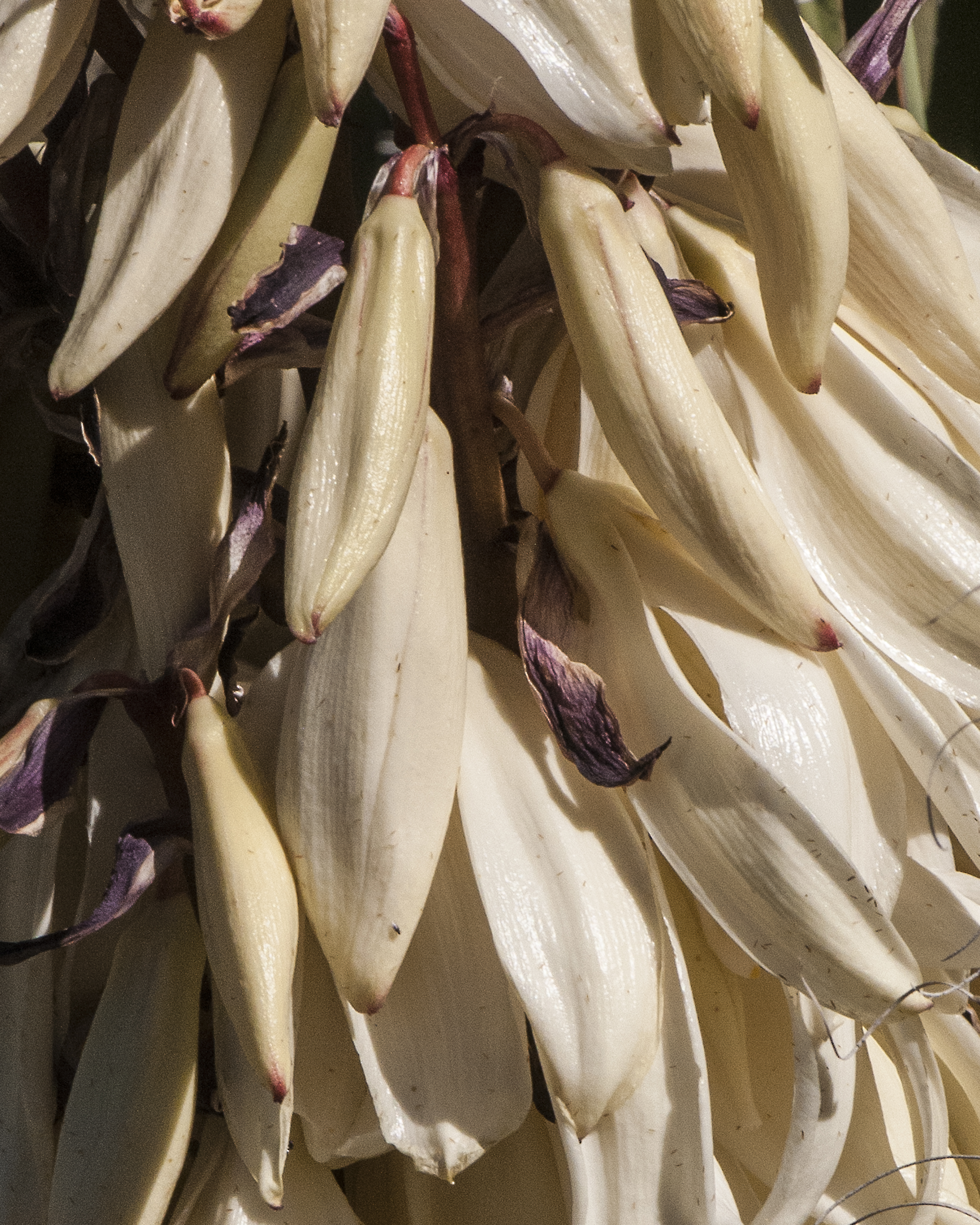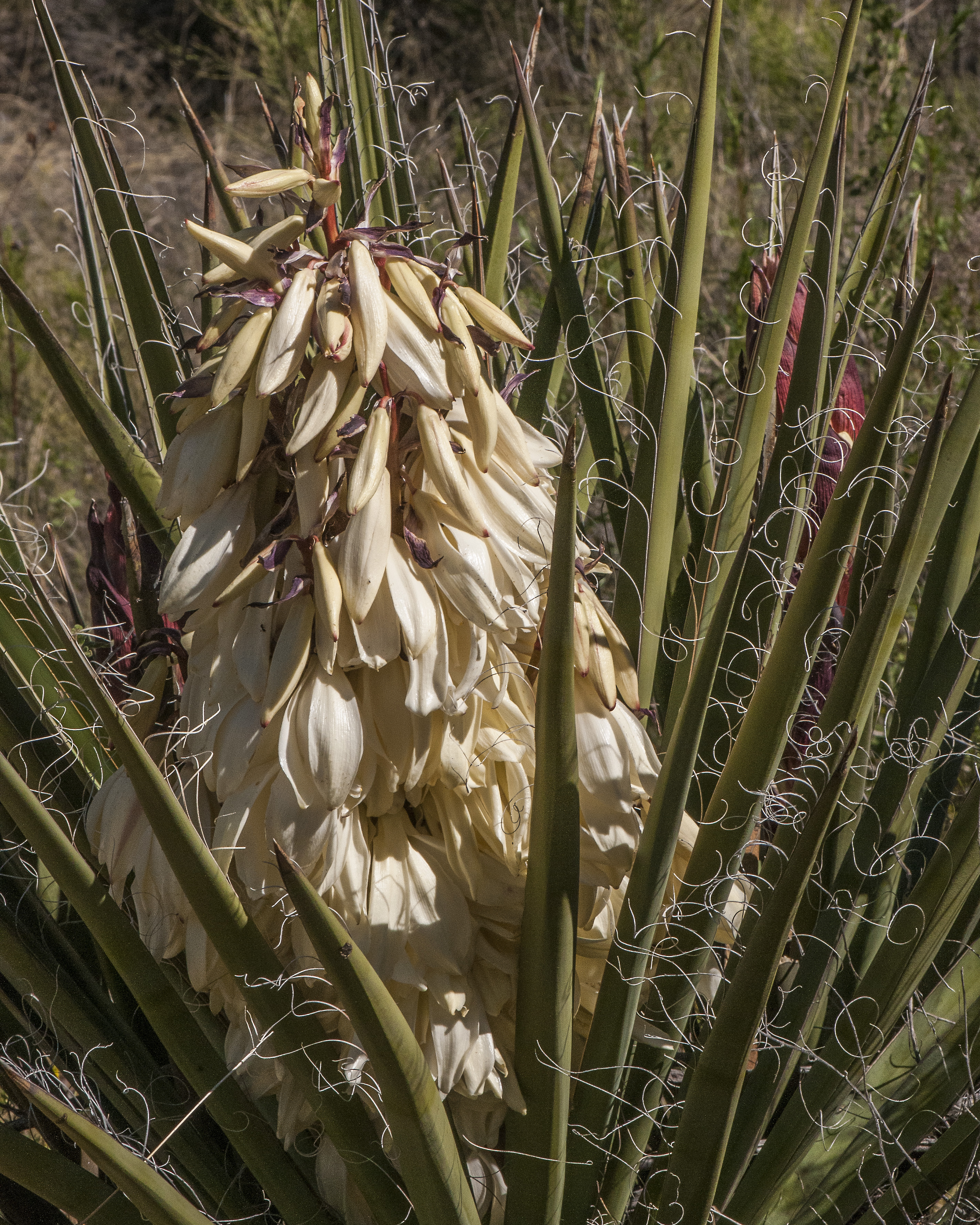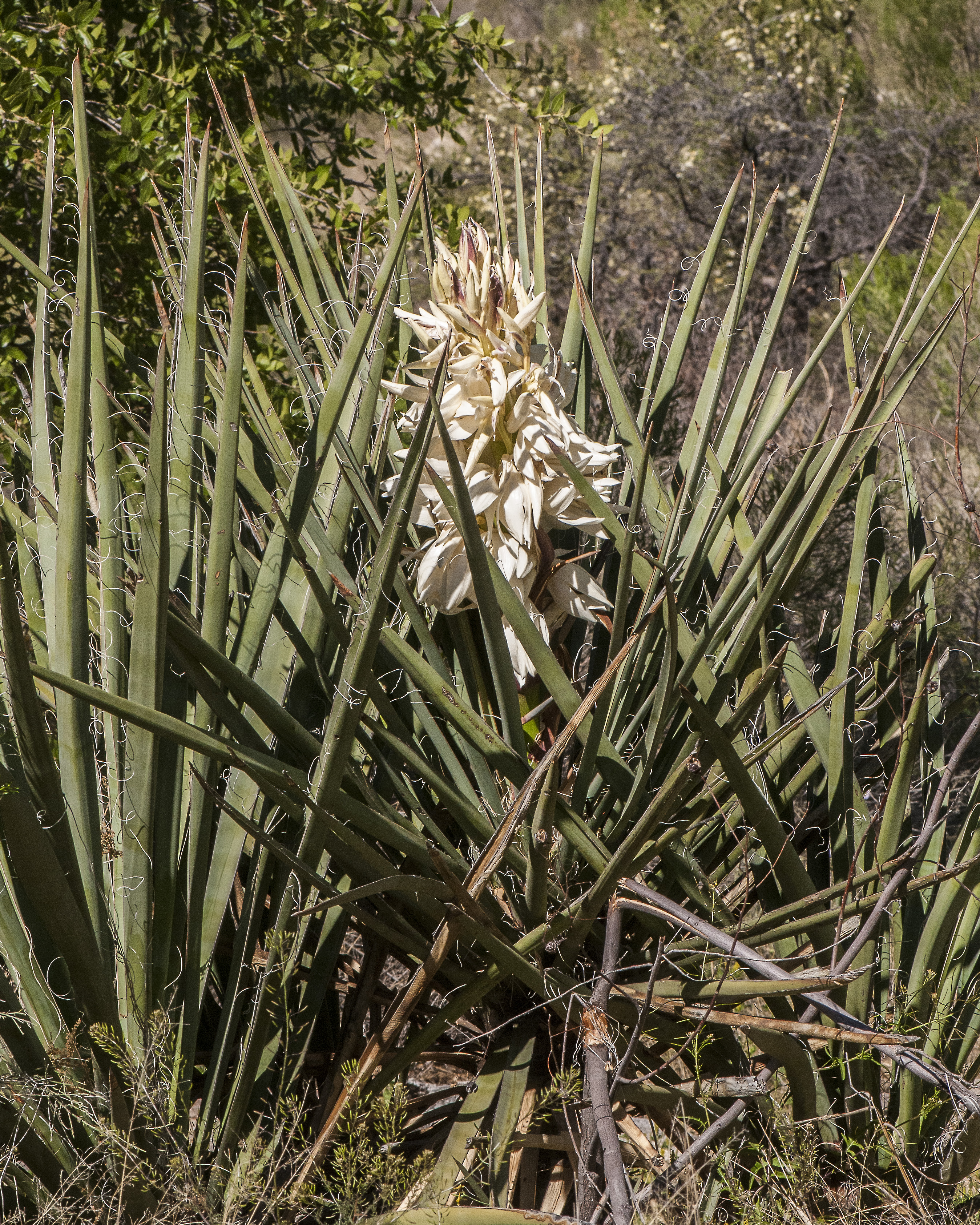Wildflowers of Southern Arizona
Banana Yucca.
Yucca baccata.
Asparagus (Asparagaceae) family.
Duration: Perennial. Nativity: Native. Lifeform: Succulent. General: Semi-succulent plants from a woody caudex, with acaulescent or short-caulescent rosettes, often in colonies, to 2.5 m tall. Stems, if present, decumbent, aerial or subterranean, simple to sometimes branched, to 2 m long. Leaves: Blades erect, bluish green, concave-convex (crescent shaped in cross section), 30-100 cm long by 2-6 cm wide, rigid, scabrous or glaucous, margins brown and fibrous. Flowers: Paniculate inflorescence arising from within, extending beyond rosettes, ovoid in outline, 60-80 cm, glabrous, rarely pubescent; peduncle scapelike, to 0.8 m; flowers pendant, 5-13 cm, the tepals connate at base, campanulate, cream-colored, occasionally tinged with purple. Fruits: Fleshy, banana-shaped fruit, 5-23 cm long by 4-8 cm wide; pendant. Ecology: Found on slopes and flats in a variety of different soil types from 3,000-8,000 ft (914-2438 m); flowers April-July. Distribution: s CA and s NV, east to sw CO, NM and w TX. Notes: Common and widespread in the southwest, distinguished by the curling fibers on the leaf edges; thicker, coarser leaves than other yuccas in the area, and large pendant white flowers followed by large, green, hanging fruits. There are two varieties; Y. baccata var. baccata, the more widespread form, is acaulescent or has up to 6 short stems less than 30 cm long and course, curling threads on the leaf margins. Y. b. var. brevifolia, found in SE Arizona and SW New Mexico, is most definitely caulescent, with up to 24 stems which can be as tall as 2 meters, and fine threads on the leaf margins. Ethnobotany: Used as a shampoo, as an antiemetic, for heartburn, as a cathartic, in childbirth, ceremonially, and as a drink. The fruits were roasted and eaten, as well as eaten raw, boiled, or baked, pulverized and dried in cakes; its use as a food is extensive throughout the region. Used for making fibers, rope, mats, sandals, and baskets; used also as an ingredient in dyes. Etymology: Yucca comes from Haitian word yuca, or manihot, because young inflorescences are sometimes roasted for food, while baccata means having pulpy, berry-like fruits, from Latin bacca, for small, round fruit.
Santa Catalina Mountains.
Molino Basin Campground
Location: Beside entrance parking lot.
4/20/19
See SEINet Pictures and Description
See FireFly Forest Pictures and Description




